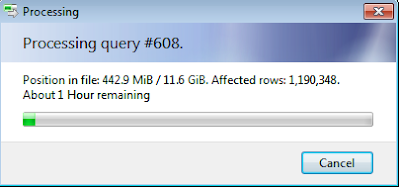ERROR 1846 (0A000): ALGORITHM=INPLACE is not supported. Reason: Cannot change column type INPLACE. Try ALGORITHM=COPY.
In this article I want to share my investigation, where I face this issue in GCP (why specially mention, you will know at the end), and hope that it might save someone's else time. The MySQL GCP version is: 5.7.33-google-log . mysql> ALTER TABLE t_user CHANGE COLUMN UserPassword UserPassword varchar(255) NOT null, ALGORITHM=INPLACE, LOCK=NONE; ERROR 1846 (0A000): ALGORITHM=INPLACE is not supported. Reason: Cannot change column type INPLACE. Try ALGORITHM=COPY. mysql> ALTER TABLE t_user CHANGE COLUMN UserPassword UserPassword varchar(70) NOT null, ALGORITHM=INPLACE, LOCK=NONE; Query OK, 0 rows affected (0.01 sec) Records: 0 Duplicates: 0 Warnings: 0 In MySQL, utf8 corresponds to 3 byte length per character, hence according to MySQL utf8 will change byte length around 85 characters. According to documentation: Extending VARCHAR column size ALTER TABLE tbl_name CH




